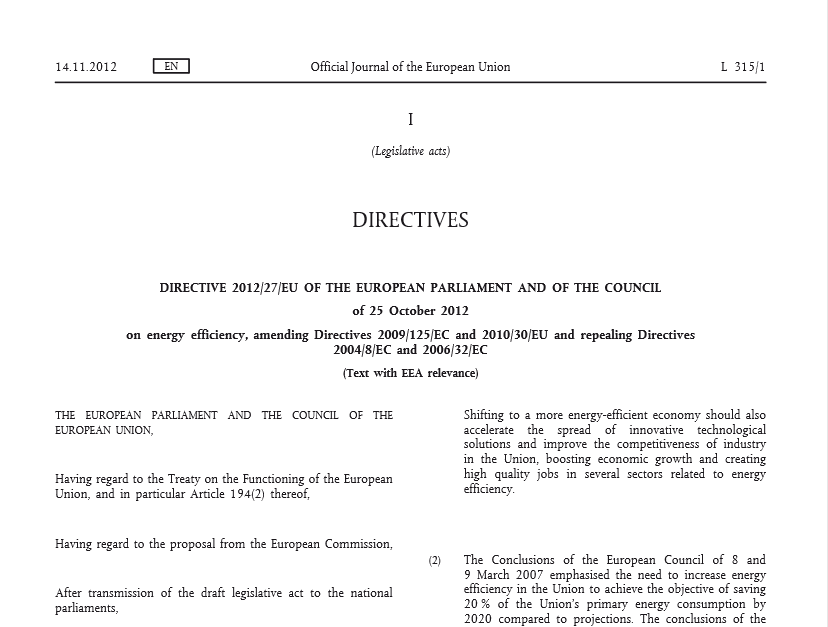The European Energy Efficiency Directive (2012/27/EU), also known as the EED, was established in 2012.
The aim of this Directive is to help to realise the European target set in 2007 to reduce European energy consumption by 20% by 2020.
This should contribute to a reduction in greenhouse gas and air pollutants, to a decrease of energy costs, and to lower dependence on import of fossil fuel.

Energy Audits
Large companies are obliged to conduct periodically energy audits, according to article 8 of the Energy Efficiency Directive.
Energy audit should take place every four years and aims to collect sufficient information concerning the enterprise’s current profile on energy consumption in order to identify possible cost efficient energy saving options, but also to qualify and report on its results.
The Directive intends to increase awareness and insight into possible savings opportunities with the energy audits.
Energy Savings
The energy audit report should make detailed and validated calculations for potential energy saving measures.
A description of the possible cost-efficient saving measures means that insight needs to be provided as to what measures will be cost-effective for a certain enterprise. The Directive has not specified cost-efficiency on this particular point.
Download
Energy Efficiency Directive (2012/27/EU)

